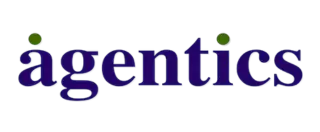
4 Key Practices for an Effective Automated Calling System
GeneralOverview
This article explores four essential practises for implementing an effective automated calling system:
- CRM integration
- Call analytics
- Compliance management
- Customizable scripts
These practises are not merely recommendations; they are vital for maximising outreach efficiency and conversion rates. By personalising interactions, ensuring regulatory adherence, and adapting to fluctuating call volumes, businesses can significantly enhance their sales performance and customer satisfaction. Embrace these strategies to transform your calling system and drive measurable results.
Introduction
Automated calling systems have revolutionised the way businesses engage with potential clients, transforming a traditionally manual process into a streamlined, efficient operation. By leveraging these advanced technologies, organisations can significantly enhance their outreach efforts, leading to improved productivity and higher conversion rates.
However, as the market becomes increasingly competitive, the challenge lies in effectively integrating these systems into sales strategies. What are the key practises that can ensure these automated solutions not only function optimally but also drive meaningful connexions with leads?
It is imperative for businesses to adopt strategic approaches that not only optimise performance but also foster genuine engagement.
Understand Automated Calling Systems and Their Role in Sales
Automated calling systems, also known as auto-dialers, are advanced software solutions that significantly enhance the outbound calling process. These systems deliver pre-recorded messages or seamlessly connect representatives with potential clients, drastically reducing the time spent on manual dialling. In the realm of commerce, auto-dialers are indispensable for improving outreach efforts, allowing teams to concentrate on high-value interactions rather than repetitive tasks. By implementing an automated calling system for routine calls, business teams can boost productivity, elevate lead engagement, and ultimately achieve higher conversion rates.
The impact of automated dialling methods on revenue productivity is profound. Businesses employing these technologies have reported a remarkable 70% improvement in conversion rates alongside a 55% reduction in cost per lead. Such efficiencies empower sales teams to manage more calls in less time, resulting in a substantial increase in overall outreach. A notable case study involving a major online retailer demonstrated that the implementation of a cloud-based contact centre enabled them to handle over 600,000 Busy Hour Call Attempts (BHCA) during peak shopping periods, underscoring the scalability and reliability of self-operating solutions.
Sales experts highlight the transformative advantages of using an automated calling system. One expert highlighted that by automating routine tasks such as appointment scheduling, businesses can save up to 60% on staffing costs, facilitating reinvestment in more strategic initiatives. Furthermore, the adoption of mechanised communication methods has been correlated with a 30% increase in retention rates, further emphasising their importance. As we advance through 2025, the integration of technology-driven communication platforms has evolved from a trend to an essential requirement for sales teams aiming to maintain competitiveness and deliver consistent, high-quality service in dynamic markets. Recognising the advantages of these frameworks and effectively incorporating them into a successful marketing strategy is vital for fostering growth.
Identify Key Features for Effective Automated Calling Systems
When selecting an automated calling system, several key features are essential for maximising effectiveness:
-
CRM Integration: Seamless integration with Customer Relationship Management (CRM) systems is vital. This capability allows for the automatic recording of calls and provides convenient access to customer information, significantly improving personalization in interactions. Businesses that implement such integrations can witness a marked improvement in customer retention; omnichannel strategies retain 89% of customers compared to just 33% for those without.
-
Call Analytics: Advanced analytics tools deliver insights into call performance, enabling teams to identify effective strategies and areas for enhancement. This data-driven approach can lead to a 25% increase in customer satisfaction scores, as it empowers teams to refine their tactics based on real-time feedback and reduces wait times, facilitating quicker resolutions for customer inquiries.
-
Compliance Management: Adhering to legal regulations, such as the Telephone Consumer Protection Act (TCPA), is crucial. A robust telephone solution guarantees compliance, assisting businesses in avoiding penalties and preserving customer trust. In today’s regulatory environment, maintaining customer trust is paramount.
-
Customizable Scripts: The ability to create and modify call scripts allows sales representatives to tailor their approach to the specific needs of each lead. This adaptability can boost participation and increase conversion rates, as tailored interactions resonate with 75% of clients, underscoring the significance of personalization in communication platforms.
-
Scalability: A proficient communication platform should be adaptable, capable of handling rising call volumes without sacrificing performance. With the global contact centre market projected to reach $496 billion by 2027, investing in scalable solutions is essential for future growth, ensuring that businesses can adapt to changing demands.
By emphasising these attributes, companies can select an automated calling system that meets their current operational requirements while also supporting their long-term expansion goals.
Implement Best Practices for Seamless Integration into Sales Strategies
To effectively integrate automated calling systems into sales strategies, it is crucial to consider the following best practices:
-
Training and Onboarding: Comprehensive training is essential for sales teams to maximise the benefits of automated calling systems. This training should cover system features, software navigation, and the utilisation of call analytics to enhance performance. Research shows that organisations investing in comprehensive training programmes experience a 20% boost in productivity among their sales groups. As Patricia Fripp asserts, “You don’t finalise a transaction; you open a relationship if you want to build a long-term, successful enterprise,” which underscores the importance of relationship-building in sales.
-
Define Clear Objectives: Establish specific goals for the communication platform, such as increasing daily call volumes or enhancing lead conversion rates. Clear objectives help align the team’s efforts and measure success effectively. Remember, establishing connections early in the transaction process is essential for long-term success.
-
Regularly Review Call Analytics: Regularly review call analytics to evaluate the performance of the automated calling system. This data-focused method enables informed modifications to scripts, calling techniques, and overall marketing strategies, ensuring ongoing enhancement. Persistence in refining these strategies is key to overcoming challenges.
-
Maintain Personal Touch: While automation simplifies processes, it is essential for representatives to engage in meaningful dialogues with leads. Utilise the mechanised system for initial outreach, but follow up with personalised interactions to build rapport and trust. As emphasised in the case study ‘Building Rapport with Clients,’ forming personal connections can lead to improved engagement and sales results.
-
Feedback Loop: Establish a feedback system where sales groups can share their experiences and recommendations for improving the phone process. This promotes a culture of ongoing enhancement and adjustment, ensuring that the framework evolves to meet the team’s needs.
By following these optimal approaches, sales groups can ensure that their outreach technology enhances their overall marketing strategies, promoting efficiency and effectiveness in their engagement efforts.
Evaluate the Impact of Automated Calling on Sales Performance
To effectively assess the impact of automated calling systems on sales performance, businesses must focus on several critical metrics:
-
Call Volume: Monitoring the number of calls made before and after implementing the automated system is essential for gauging increased outreach efforts. Smaller call centres typically handle around 50 to 100 calls per agent daily, while larger centres can manage several hundred to over a thousand calls. This data illuminates the efficiency gains achieved through an automated calling system, as demonstrated in the case study on implementing a mechanised dialer.
-
Conversion Rates: Evaluating the percentage of leads converted into customers is crucial for assessing the effectiveness of the calling strategy. Businesses utilising marketing automation to nurture prospects have reported an astonishing 451% increase in qualified leads, underscoring the power of automated solutions to enhance conversion rates. The case study highlights specific features, such as intelligent call routing, that contribute to these improvements.
-
Response Times: Analysing the speed at which leads are contacted after initial outreach is vital, as quicker response times correlate with higher conversion rates. Research indicates that reaching out to a lead within a minute can boost conversions by 391% compared to waiting a day, emphasising the significance of timely follow-ups in the sales process. The automated calling system streamlines this process, facilitating faster interactions with potential clients.
-
Customer Satisfaction: Gathering feedback from customers regarding their experiences with mechanised calls provides valuable insights for improvement. High customer satisfaction scores (CSAT) are essential, with benchmarks typically ranging from 75% to 85%. Utilising transcript summarizers, as noted in the case study, can elevate the quality of interactions, ensuring that customer needs are addressed promptly and effectively.
Evaluating the return on investment (ROI) of the automated calling system necessitates contrasting the costs of implementation and operation with the revenue generated from increased transactions. This metric is crucial for justifying the investment in automation and ensuring alignment with organisational goals. By leveraging AI solutions, companies can enhance their ROI through improved efficiency and effectiveness in revenue generation processes.
By regularly evaluating these metrics, businesses can make informed decisions regarding their automated calling strategies, ensuring they continue to drive sales performance and meet their operational objectives.
Conclusion
Implementing an effective automated calling system is not just beneficial; it is crucial for businesses striving to enhance their sales processes and achieve higher conversion rates. By leveraging advanced technologies, organisations can streamline their outreach efforts, enabling sales teams to focus on building meaningful relationships with potential clients instead of getting bogged down in repetitive tasks. This shift boosts productivity and fosters a more engaging customer experience.
The article highlights several key practises and features essential for maximising the effectiveness of automated calling systems:
- Ensuring seamless CRM integration
- Utilising call analytics
- Maintaining compliance
- Personalising interactions
These are pivotal elements that drive successful outcomes. Furthermore, regular evaluation of call metrics—such as volume, conversion rates, and customer satisfaction—provides invaluable insights that inform ongoing strategy adjustments.
Ultimately, the integration of automated calling systems represents a transformative opportunity for sales teams. By embracing these technologies and best practises, businesses can enhance their outreach capabilities, improve customer engagement, and drive revenue growth. As the landscape of sales continues to evolve, investing in automation is essential for staying competitive and meeting the demands of the modern market.
Frequently Asked Questions
What are automated calling systems?
Automated calling systems, also known as auto-dialers, are advanced software solutions that enhance the outbound calling process by delivering pre-recorded messages or connecting representatives with potential clients, reducing the time spent on manual dialling.
How do automated calling systems benefit businesses?
These systems improve outreach efforts, allowing teams to focus on high-value interactions, boost productivity, elevate lead engagement, and achieve higher conversion rates.
What impact do automated dialling methods have on revenue productivity?
Businesses using automated dialling methods have reported a 70% improvement in conversion rates and a 55% reduction in cost per lead, enabling sales teams to manage more calls in less time.
Can you provide an example of the effectiveness of automated calling systems?
A major online retailer implemented a cloud-based contact centre that allowed them to handle over 600,000 Busy Hour Call Attempts (BHCA) during peak shopping periods, showcasing the scalability and reliability of automated solutions.
What cost savings can businesses achieve by using automated calling systems?
By automating routine tasks such as appointment scheduling, businesses can save up to 60% on staffing costs, allowing for reinvestment in more strategic initiatives.
How do automated calling systems affect customer retention rates?
The adoption of mechanised communication methods has been correlated with a 30% increase in retention rates, highlighting their importance in maintaining customer relationships.
Why is it essential for sales teams to integrate automated calling systems?
As technology-driven communication platforms have evolved into an essential requirement, integrating these systems helps sales teams maintain competitiveness and deliver consistent, high-quality service in dynamic markets.
Enjoyed this post? Share it with your network!
10 Best AI Sales Tools to Boost Your Team’s Performance

Discover the top 10 best AI sales tools to enhance team performance and drive revenue growth.
Mastering Test Call Numbers: A Step-by-Step Guide for Sales Directors

Elevate your communication with our guide on mastering test call numbers for sales success.
7 Ways Automated Outbound Calls Boost Sales Performance

Discover how automated outbound calls enhance sales performance and streamline communication.
